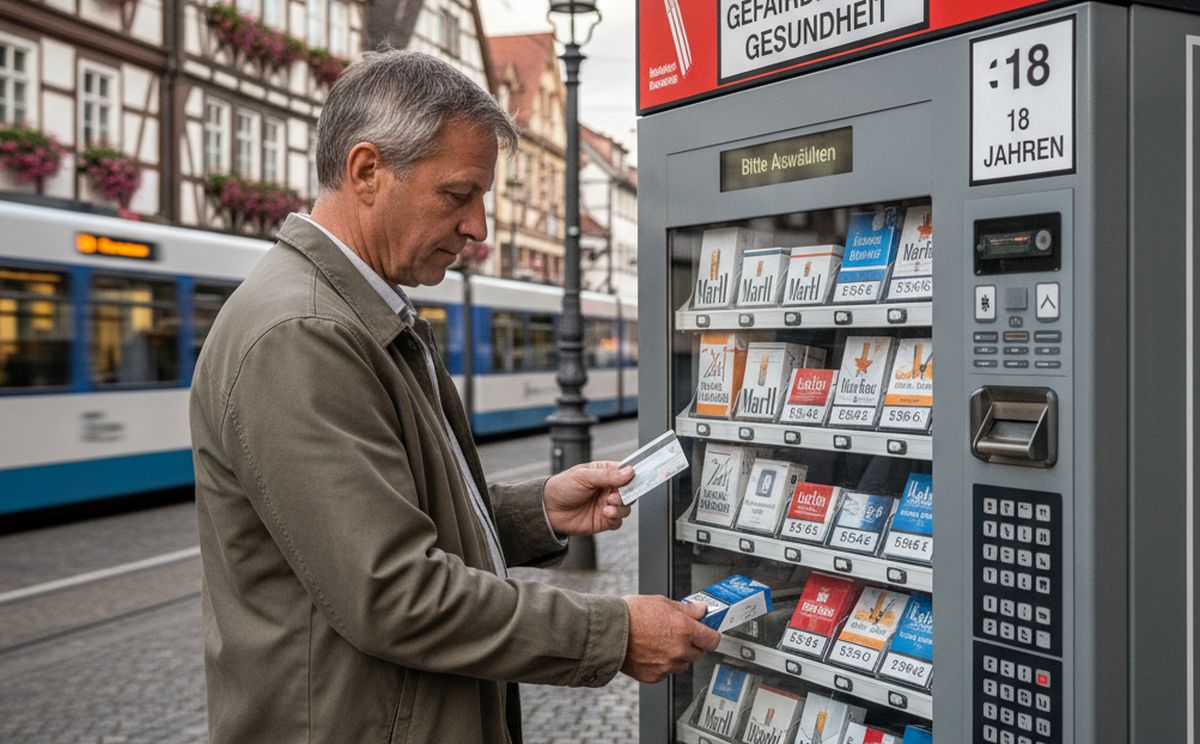Travelers and residents often check cigarette prices before heading to Germany, where costs reflect high taxes and strict rules. A standard pack of 20 cigarettes, like Marlboro, typically runs between 8 and 10 euros across major cities. These figures come from recent data showing steady increases due to government policies aimed at reducing smoking rates. In Berlin, for example, expect to pay around 8 euros for a pack, while other areas might charge slightly more. Prices at airports or duty-free shops can differ, sometimes offering deals on larger quantities. Beyond just the numbers, regional variations and brand choices play a role in what smokers end up spending. This guide breaks down the latest details on pricing, buying options, and related laws to help navigate the market effectively.
Average cigarette prices across Germany
Smokers in Germany face consistent pricing for most brands, with a pack of 20 cigarettes averaging about 8.50 euros nationwide. This baseline holds steady in supermarkets, kiosks, and gas stations. Data from cost-of-living trackers indicate that in cities like Munich or Hamburg, the cost hovers near 9 euros for popular options. Rural areas sometimes see minor dips, down to 8 euros, but these differences rarely exceed 50 cents. Over the past year, inflation and tax adjustments have pushed prices up by roughly 5 percent from 2024 levels. For budget-conscious buyers, generic brands provide savings, often 1 to 2 euros less per pack than premium names.
Price breakdown by major brands
Marlboro leads as one of the top sellers, with a pack costing 8 to 9 euros in most stores. Camel follows closely at around 8.50 euros, while Lucky Strike might go for 8.20 euros. Premium imports, such as Davidoff, climb higher to 10 euros or more. These variations stem from production costs and market demand. Vending machines, common in bars and public spots, add a small markup, usually 20 to 50 cents extra. Online sources and apps tracking prices show real-time updates, helping users spot deals in specific neighborhoods.
| Brand | Average Price (€) | Typical Pack Size |
|---|---|---|
| Marlboro | 9.00 | 20 cigarettes |
| Camel | 8.50 | 20 cigarettes |
| Lucky Strike | 8.20 | 20 cigarettes |
| Davidoff | 10.50 | 20 cigarettes |
| Winston | 8.00 | 20 cigarettes |
| Gauloises | 7.80 | 20 cigarettes |
| Gitanes | 7.80 | 20 cigarettes |
| West | 8.20 | 20 cigarettes |
| Pall Mall | 8.00 | 20 cigarettes |
| L&M | 7.50 | 20 cigarettes |
| JPS | 7.20 | 20 cigarettes |
| Pueblo | 8.50 | 20 cigarettes |
| Chesterfield | 8.00 | 20 cigarettes |
| Vogue | 8.50 | 20 cigarettes |
| Benson & Hedges | 9.00 | 20 cigarettes |
| Parliament | 9.50 | 20 cigarettes |
| Rothmans | 7.80 | 20 cigarettes |
| Prince | 8.00 | 20 cigarettes |
| HB | 7.00 | 20 cigarettes |
| Tawa | 6.50 | 20 cigarettes |
| Burton | 6.50 | 20 cigarettes |
| Denim | 6.50 | 20 cigarettes |
| Paramount | 6.00 | 20 cigarettes |
| Globetrotter | 6.00 | 20 cigarettes |
These prices align with 2025 market reports, though fluctuations occur based on location and promotions. Shoppers in eastern Germany, such as Dresden, report averages around 9 euros for mid-tier brands, reflecting slight regional economic differences.
Factors driving cigarette costs in Germany
Taxes form the bulk of cigarette expenses, with the government imposing excise duties that make up over 70 percent of the retail price. This structure aims to discourage consumption while funding health initiatives. Recent hikes in 2024 added about 20 cents per pack, and similar changes could appear in 2025 budgets. Import fees affect foreign brands, pushing their costs above local alternatives. Supply chain issues, like tobacco sourcing from abroad, also contribute to periodic spikes. Currency exchange rates play a minor role for international buyers, as euros dominate all transactions.
Impact of regional taxes and regulations
Each German state enforces its own sales tax layers on top of federal duties, leading to small disparities. In Bavaria, for instance, combined taxes result in packs costing 10 cents more than in northern states like Schleswig-Holstein. Anti-smoking campaigns influence pricing indirectly by limiting advertising, which keeps brand competition low and prices stable. Border areas near Poland or the Czech Republic see smuggling attempts, but strict enforcement maintains official rates. Travelers crossing into Germany must declare cigarettes to avoid fines, with limits set at 200 sticks per person from non-EU countries.
Where to find cigarettes in Germany
Convenience stores and supermarkets stock a wide range, with chains like Rewe or Edeka offering reliable access. Gas stations provide 24-hour options, ideal for late-night needs. Airports, such as Frankfurt, sell duty-free packs in cartons of 200 for around 65 euros, a savings compared to single packs. Train stations and urban kiosks cater to quick purchases, though prices there edge higher due to convenience. Online platforms deliver to homes, but age verification and shipping fees apply. Tourists should note that public vending machines require a German ID or credit card for age checks, restricting access for visitors.
Buying tips for travelers and locals
Locals often buy in bulk from wholesale outlets to cut costs, saving up to 10 percent on cartons. Visitors from the EU can bring unlimited quantities for personal use, but non-EU limits cap at one carton. Compare prices via apps before shopping to avoid overpaying in tourist zones. Seasonal sales, rare but possible around holidays, drop prices by 50 cents per pack. Always check expiration dates on packs, as stale stock appears in smaller shops. For those quitting, pharmacies sell nicotine aids at lower costs than cigarettes themselves.
Smoking laws and restrictions in Germany
Public smoking bans cover indoor spaces like restaurants, offices, and trains, with fines up to 100 euros for violations. Outdoor rules vary by state; Bavaria prohibits smoking in beer gardens, while Berlin allows it in designated areas. Workplaces enforce total bans, and schools maintain smoke-free zones extending 50 meters from entrances. Car smoking with children present draws penalties of 500 euros or more. These measures have reduced smoking prevalence to about 25 percent among adults. Enforcement relies on public reporting and spot checks by authorities.
Health warnings and packaging requirements
All packs display graphic health warnings covering 65 percent of the surface, detailing risks like cancer and heart disease. Plain packaging proposals circulate in parliament, potentially standardizing designs by 2026. Retailers must hide displays from view, selling only upon request. Minors under 18 cannot buy or possess cigarettes, with sellers facing heavy fines for non-compliance. Public health ads reinforce these rules, appearing on billboards and TV. Smokers seeking help find free quitlines and counseling through health insurance plans.
Alternatives to smoking cigarettes in Germany
E-cigarettes gain popularity as a cheaper option, with devices starting at 20 euros and refills around 5 euros. Vaping faces fewer restrictions outdoors but bans indoors match those for traditional smoking. Heat-not-burn products, like IQOS, cost 6 to 8 euros per pack of sticks, appealing to those switching from cigarettes. Nicotine pouches, tobacco-free, sell for 4 euros per tin and evade many smoking bans. CBD-infused options emerge in specialty shops, priced at 10 euros for small packs. These alternatives see sales growth of 15 percent annually, driven by health trends.
- E-cigarettes: Widely available in vape shops, with flavors ranging from tobacco to fruit.
- Heat-not-burn: Sold in tobacco stores, requiring a device investment of 50-100 euros.
- Nicotine pouches: Discreet and smoke-free, popular among young adults.
- Patches and gums: Over-the-counter at pharmacies, starting at 10 euros for a week’s supply.
Shifting to these reduces costs long-term, as monthly cigarette expenses average 200 euros for pack-a-day users, versus 100 euros for vaping. Government subsidies for cessation programs lower barriers for those quitting entirely. Market analysts predict further price rises for cigarettes, making alternatives even more attractive by 2026.
Future outlook on cigarette pricing
Projections for 2025 and beyond point to continued increases, with taxes potentially adding another 30 cents per pack. EU directives push for harmonized pricing, aiming to curb cross-border shopping. Environmental concerns over cigarette waste could introduce eco-fees, tacking on extra costs. Consumer behavior shifts toward fewer smokers, pressuring brands to innovate or face declining sales. Retailers adapt by expanding non-tobacco sections, while online sales grow despite regulations. For anyone tracking cigarette price in Germany, staying updated via official sources ensures accurate planning.

